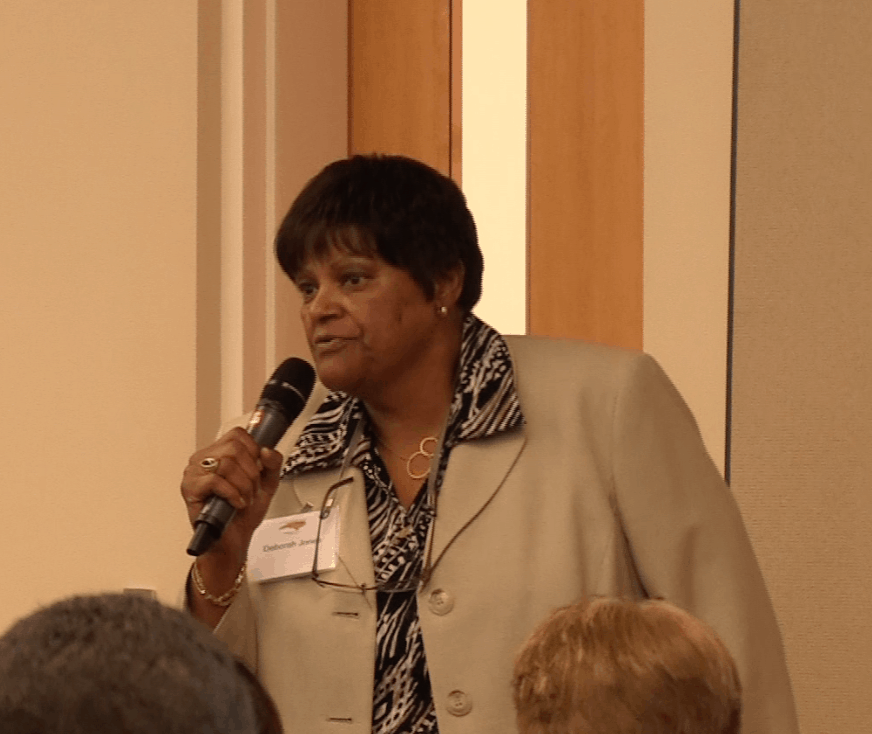
The North Carolina Senate released a budget a few weeks ago with ambitious plans to reduce class sizes in state schools.
This coming school year, the Senate plan reduces the class size in grades 1-3 to 1 teacher for every 16 students. The following year, it drops that number to 1:15. In the second year, the kindergarten ratio would also drop to 1:17.
The way this is accomplished is by adding about 6,700 teachers over two years — 2,000 of those this coming year.
And while all of this is happening, the Senate is also proposing cutting teacher assistants — the funding reduction amounts to the equivalent of more than 8,500 fewer TAs over two years.
Well-meaning people can hold different views as to whether these ideas are good or bad. But practically speaking, the implementation of these plans presents some challenges.
The Senate and House budgets are far apart in some areas, and the best case scenario is that the two chambers hammer out their budget differences and pass a spending plan sometime in July. If that happens, school administrators will have a little more than a month to hire extra teachers for class-size reduction and to eliminate some of their teacher assistants. That’s a quick turnaround, and superintendents around the state are expressing some concerns.
“I’m operating totally blind this year,” said Greene County Superintendent Patrick Miller. “At this point, I don’t have much more than a hopeful framework.”
In past years, he said the House and Senate budget plans were similar enough that he could start making some decisions for the coming year. But this year, the two spending proposals are just too far apart. Right now, Miller is just hopeful that the two chambers do reach a compromise in July. If the debate goes on into September or October, he said he doesn’t know what he’s going to do.
“Really, it’s almost too late to adjust at that point,” he said. “I certainly hope that we’re not looking at a scenario like that.”
Lory Morrow, Superintendent of Davidson County, is worried that it’s going to be difficult to get the needed teachers before the start of the school year if the Senate’s budget proposal stands as it is now written. Especially if localities end up having to wait until August to start looking.
“It is difficult to find high quality teachers in late August,” she said. “All of the high performing teachers or young college grads that have received their teaching degrees, they have already been offered employment in May and June and July.”
And the longer the legislature waits to make a decision, the worse it gets, Morrow said. Especially given the fact that districts across the state will all be looking for new teachers at the same time.
Shirley Prince, executive director of the North Carolina Principals and Assistant Principals’ Association, added that “highly desirable candidates for hard to fill positions” are likely to have already been hired by the time districts get a chance to start looking for extra teachers.
The longer districts have to wait, the slimmer their pool of qualified candidates.
And this is just one aspect of the problem. Another is infrastructure. Adding teachers and reducing class sizes means, in some cases, providing extra classrooms. It’s tough to do that with about a month and a half of lead time.
Morrow said this is a constant problem for staff in Davidson County, but they’re usually able to find the space they need. But under the Senate’s budget proposal, Davidson County would need about 21 new teachers this year, and Morrow said the county is not equipped to add that many new classrooms.
Jack Hoke, executive director of the North Carolina School Superintendents Association, said urban districts in particular are going to be hard hit by infrastructure costs. He said that the increased number of teachers are probably going to require urban districts to build new classrooms or even schools. And the money for that is going to come out of district, not state, pockets.
Hoke said he hopes there is some clarity on these issues in the continuing resolution that the legislature must pass before the beginning of the fiscal year — July 1 — to ensure the continued operation of the government. In particular, he would like to see the resolution address the teacher assistant reduction so administrators can start working on that.
“If that’s in the continuing resolution, that would give districts starting next week, the opportunity to get this right,” he said.
But even with advance notice, superintendents like Morrow and Miller are still worried about the TA reductions. Morrow said that many TAs in Davidson County double as bus drivers.
“That could potentially create an additional problem for us districtwide,” Morrow said.
Miller is also concerned about the TA reductions, but for a different reason.
“The other issue that a lot of people don’t think about is with the teacher assistants, when you have another person in that room, you’ve cut that class size in half,” he said.
Some legislators argue, however, that the benefit of teacher assistants is unproven, and that it makes more sense to reduce class sizes than keep TAs.
Still, Miller cautioned that nobody in Greene County is actually going to see K-3 classrooms of 1 teacher for every 16 students in the first year or 1 to 15 in the second. He says the same allotment that pays for traditional teachers also covers instructors in art, physical education, music and other “special” classes.
“There will be no class size of 15 unless you’re not going to have any of the extras,” he said.
Prince said that from a principal’s perspective, the fact that such major changes are still undecided this close to the school year is a big problem.
“Another significant concern is how you deploy your staff and set up your instructional schedule when you really don’t know if you’re going to have TAs, how many teachers you’re going to have — I mean imagine the chaos of starting school not knowing your complete staff and how you’re going to deploy that staff,” she said.
Miller said he just wants the two chambers to come to a decision so that he can move on with his work.
“Whatever they’re going to do, go ahead and get it done and let us try to be ready by the start of the school year,” he said.
The sentiment over sudden changes made by legislators in the summer months, can perhaps be best summed up by Deborah Jones, an executive coach from the Sandhills Leadership Academy. She questioned a legislative panel about the practice at a recent event held by North Carolina State University’s Northeast Leadership Academy.
“You have laws and regulations that will be made this summer, and you truly expect teachers and principals to put them in place in the fall?” Jones said. “Sometimes we need that breathing period in there just to digest what you want, so that it’s done correctly as a change.”


